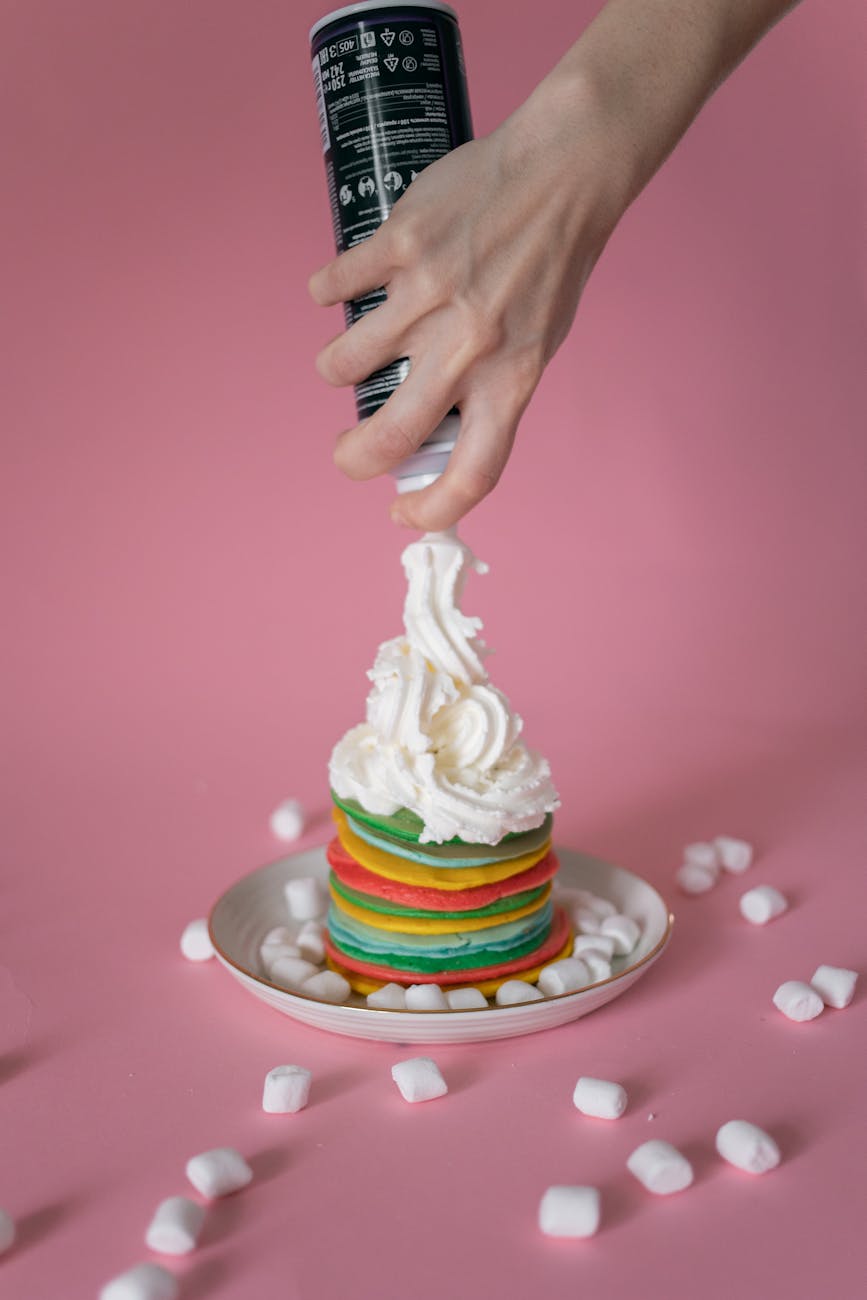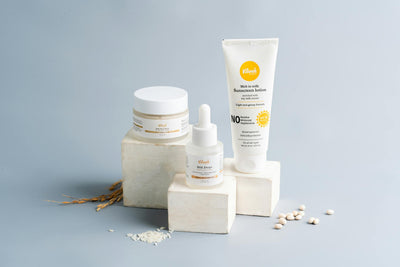Homemade Whipped Cream Storage
For those who love to indulge in the rich, velvety texture of homemade whipped cream, understanding the proper storage methods is key to maintaining its quality. This section will provide insights into how to store your whipped cream and the factors that influence its shelf life.
Storing Homemade Whipped Cream
When storing homemade whipped cream, it's essential to place it in an airtight container. This will help to prevent exposure to air and other contaminants that could affect its freshness and stability. Once in a container, the whipped cream should be promptly placed in the refrigerator to maintain its optimal texture and flavor.
A recommended practice for additional freshness is to place a layer of plastic wrap directly on the surface of the whipped cream before sealing the container. This helps to reduce the amount of air coming into contact with it. For more details on refrigeration techniques and ideal temperature settings, be sure to read about how long do raspberries last in the fridge? as similar principles apply.
Factors Affecting Shelf Life
The longevity of homemade whipped cream in the refrigerator is influenced by several factors:
- Ingredients Used: The type of cream (heavy or light) and any additional ingredients (sugar, vanilla extract, etc.) can impact how well the whipped cream holds up over time.
- Temperature: Consistent refrigeration is crucial. Fluctuations in temperature can accelerate the breakdown process and lead to spoilage.
- Hygiene: The cleanliness of utensils and containers used during preparation and storage plays a significant role in preventing early spoilage.
- Preparation Method: Over or under-whipping can affect the whipped cream's texture and stability.
- Exposure to Air: As mentioned earlier, whipped cream should be protected from air to prevent the growth of bacteria and the breakdown of its structure.
Here's a quick reference table to help you visualize the aspects affecting whipped cream's shelf life:
| Factor | Description | Impact on Shelf Life |
|---|---|---|
| Ingredients | Type and quality of cream and additives | Varies |
| Temperature | Consistency and degree of coldness in storage | Critical |
| Hygiene | Cleanliness of prep and storage materials | Significant |
| Preparation | Whipping method and outcome | Moderate |
| Air Exposure | How well the whipped cream is sealed | High |
By understanding and controlling these factors, you can ensure that your homemade whipped cream remains delightful for as long as possible. For further guidance on prolonging the freshness of other foods, explore the various articles available, such as how long does crab last in the fridge? and how long does birthday cake last in the fridge?.
Refrigerating Whipped Cream
Refrigeration is key to preserving the freshness of homemade whipped cream. Proper storage techniques and maintaining an ideal temperature are essential for extending the shelf life of your whipped cream.
Proper Refrigeration Techniques
When refrigerating homemade whipped cream, it's crucial to use an airtight container. Exposure to air can introduce moisture and other contaminants, leading to a quicker spoilage. Here's how you can ensure your whipped cream stays fresh:
- Transfer the whipped cream to a clean, airtight container immediately after preparation.
- Smooth the top of the whipped cream to create a flat surface, which can help reduce exposure to air.
- If using a bowl, press a layer of plastic wrap directly onto the surface of the whipped cream before sealing the container.
- Store the whipped cream in the back of the refrigerator, where the temperature is most stable.
Following these steps will help maintain the integrity of your whipped cream’s texture and taste while refrigerated.
Ideal Temperature for Storage
The optimal temperature range for refrigerating whipped cream is between 35°F (1.7°C) and 40°F (4.4°C). At this range, the risk of bacterial growth is minimized, and the whipped cream remains stable. Here's what you need to know about setting your refrigerator:
| Temperature Range | Purpose |
|---|---|
| 35°F - 40°F (1.7°C - 4.4°C) | Ideal for storing whipped cream |
| Above 40°F (4.4°C) | May lead to rapid spoilage |
| Below 32°F (0°C) | Can cause whipped cream to freeze |
- Ensure your refrigerator is set within the ideal temperature range using a standalone appliance thermometer.
- Avoid placing the whipped cream near the refrigerator door, as the temperature there can fluctuate with frequent opening and closing.
- Regularly check the temperature setting of your refrigerator to ensure it remains constant.
By adhering to these refrigeration guidelines, you can help extend the freshness of your homemade whipped cream. Always check for signs of spoilage before use, and consume your whipped cream within the recommended time frame. For more insights on storing other perishable items, explore our comprehensive guides on the shelf life of products like how long do raspberries last in the fridge? and how long does homemade soup last in the fridge?.
Shelf Life of Homemade Whipped Cream
Understanding how long homemade whipped cream lasts in the fridge is important for maintaining its freshness and ensuring that your desserts and beverages remain delectable. Here's what you need to know about the timeline for consumption and the signs of spoilage.
Timeline for Consumption
Homemade whipped cream, when stored correctly, has a relatively short shelf life due to its dairy content and the absence of preservatives that are often found in commercial whipped creams. It's best consumed within a specific timeframe to enjoy its peak quality.
| Storage Condition | Recommended Consumption Timeframe |
|---|---|
| Refrigerated (38-40°F) | 24-48 hours |
For optimal freshness, you should aim to use your homemade whipped cream within 24 to 48 hours after making it. This ensures that the texture and flavor remain at their best. Beyond this timeframe, the whipped cream may still be safe to consume but could start to deteriorate in quality. Always check for signs of spoilage before using.
Signs of Spoilage
Even within the ideal consumption timeframe, it's crucial to be vigilant for spoilage indicators. Here are signs that your homemade whipped cream has gone bad:
- Texture Changes: If the whipped cream appears watery, has separated, or has lost its fluffy consistency, it's a sign that it has started to degrade.
- Discoloration: Any form of discoloration, such as yellowing, is a clear indication that the whipped cream should not be consumed.
- Off Smell: A sour or unpleasant odor is a strong indicator that the whipped cream has spoiled and should be discarded.
- Mold Growth: The presence of mold is an unmistakable sign of spoilage. If you spot any mold, do not consume the whipped cream.
If you encounter any of these signs, it's important to discard the whipped cream to avoid potential foodborne illness. Always practice good hygiene and follow proper handling and storage guidelines to extend the shelf life of whipped cream and other perishable items.
For more information on the shelf life of various foods and how to store them properly in your fridge, you can explore articles such as how long do raspberries last in the fridge? and how long does birthday cake last in the fridge?. These resources can help guide you in keeping your perishables fresh for as long as possible.
Extending Whipped Cream Freshness
Ensuring your homemade whipped cream maintains its freshness can enhance your culinary creations and extend the pleasure of your sweet treats. Proper handling and storage can make a significant difference in how long your whipped cream stays fresh in the refrigerator.
Tips for Prolonging Shelf Life
- Chill Your Tools: Before whipping, chill the bowl and beaters in the refrigerator. This helps maintain the structure of the whipped cream for a longer period.
- Airtight Storage: Transfer the whipped cream to an airtight container to protect it from absorbing refrigerator odors and moisture.
- Keep It Cold: Store whipped cream at the back of the fridge where the temperature is coldest and most stable.
- Portioning: Consider storing the whipped cream in separate small containers to avoid repeatedly exposing the entire batch to warm air when serving.
By adhering to these strategies, you can help maintain the quality and extend the shelf life of your homemade whipped cream. The table below outlines ideal storage practices:
| Storage Tip | Action | Purpose |
|---|---|---|
| Pre-cooling | Chill bowl and beaters | Preserves texture |
| Container | Use airtight containers | Prevents odor absorption |
| Location | Store at the back of the fridge | Ensures consistent cold temperature |
| Servings | Use small containers | Minimizes exposure to air |
For additional information on the shelf life of other food items, you might be interested in learning how long do raspberries last in the fridge? or how long does hamachi sushi last in the fridge?.
Avoiding Common Mistakes
- Avoid Over-Whipping: Over-whipping can lead to a grainy texture and separation. Stop when you reach soft to medium peaks.
- Skip the Counter: Do not leave whipped cream at room temperature for extended periods. Return it to the fridge as soon as possible.
- Don't Mix: Once whipped, avoid stirring or mixing the cream, as this can deflate it. Spoon it gently instead.
- Clean Utensils: Make sure all utensils are clean and free of any residue that can compromise the whipped cream's stability.
Recognizing and avoiding these common pitfalls will help you retain the delightful quality of your homemade whipped cream. As you incorporate whipped cream into your dishes, explore how to use it in recipes or as a garnish by understanding how long does birthday cake last in the fridge? or find out how long does sour cream last in the fridge? for more ideas on food preservation.
Freezing Whipped Cream
Freezing whipped cream can be a convenient way to extend its shelf life and have it readily available for future use. When done properly, you can enjoy the luxury of homemade whipped cream even when you're short on time.
Freezing Process
To freeze whipped cream, you should first ensure that it's whipped to stiff peaks; this will help it maintain its texture better when frozen. Spoon dollops of whipped cream onto a baking sheet lined with parchment paper, spacing them apart so they do not touch. Place the baking sheet in the freezer and freeze until the whipped cream is firm, which typically takes about two to three hours.
Once the dollops are frozen solid, transfer them to an airtight container or a heavy-duty freezer bag, removing as much air as possible before sealing. Label the container with the date so you can keep track of how long they've been stored. This method helps you use just as much whipped cream as you need without defrosting the entire batch.
Thawing and Reusing Frozen Whipped Cream
When you're ready to use your frozen whipped cream, select the number of dollops needed and transfer them to the refrigerator to thaw for a few hours or overnight. Alternatively, you can place them directly onto your dessert or beverage, and they will thaw quicker due to their smaller size.
It's important to note that while frozen whipped cream retains its flavor, it may not hold its shape as perfectly as fresh whipped cream once thawed. Therefore, it's best used in situations where it will be incorporated into recipes or used as a topping where the texture is less critical.
For ideas on how to incorporate whipped cream into recipes or for serving suggestions, consider reading our articles on how long does birthday cake last in the fridge? for dessert inspirations or how long does homemade soup last in the fridge? for savory applications.
Remember, when handling food products, always follow proper hygiene practices to ensure food safety.
Using Whipped Cream
Whipped cream is a versatile ingredient that can enhance the flavor and presentation of many dishes. When you've taken the time to create homemade whipped cream, incorporating it into recipes or using it as a garnish can add a touch of elegance and a hint of indulgence to your culinary creations.
Incorporating Whipped Cream in Recipes
Homemade whipped cream can be more than just a topping; it can also be a key component in various recipes. Here are a few ways you can incorporate whipped cream into your dishes:
- Desserts: Fold whipped cream into mousses, custards, or cheesecakes to add lightness and volume.
- Pastries: Use it as a filling for cream puffs, eclairs, or layered cakes.
- Beverages: Top off your hot cocoa, specialty coffees, or milkshakes with a generous dollop of whipped cream.
- Fruit Salads: Gently combine whipped cream with fresh fruits for a simple yet decadent treat.
When mixing whipped cream into recipes, remember to do so gently to maintain its airy texture. For ideas on what fruits pair well with whipped cream, consider exploring how long do strawberries last in the fridge? or how long do raspberries last in the fridge?.
Serving Suggestions and Ideas
Whipped cream can elevate the simplest of desserts to something special. Here are some serving suggestions to inspire your use of homemade whipped cream:
- Garnishing Desserts: Add a swirl of whipped cream on top of pies, fruit crisps, or brownies.
- Enhancing Breakfast: Spoon over pancakes, waffles, or French toast for a delightful start to your day.
- Creating Parfaits: Layer whipped cream with granola and fresh fruit for an attractive and delicious parfait.
- Decorating Cakes: Pipe designs or cover cakes with whipped cream for a light and fluffy frosting alternative.
For anyone curious about how to keep other foods fresh, including the perfect pairings for whipped cream, our articles on how long does birthday cake last in the fridge? or how long do macarons last in the fridge? offer valuable insights.
Remember, while whipped cream can be a delightful addition to many dishes, its freshness is pivotal for the best taste and food safety. Always check for signs of spoilage before using, and enjoy your homemade whipped cream within the recommended timeframe. For more information on the shelf life of whipped cream, refer to our main article on 'how long does homemade whipped cream last in the fridge?'.
Safety Precautions
Proper hygiene and storage guidelines are critical when handling homemade whipped cream to ensure it remains safe to consume and maintains its quality. Here, we provide essential practices to follow.
Hygiene Practices
Maintaining cleanliness is paramount when preparing and storing whipped cream:
- Clean Your Equipment: Always start with clean utensils and bowls. Bacteria can easily grow on equipment that hasn't been properly sanitized.
- Wash Your Hands: Before handling ingredients or equipment, thoroughly wash your hands with soap and water.
- Fresh Ingredients: Ensure that the cream used for whipping is not only fresh but also stored correctly prior to use.
- Avoid Cross-Contamination: Use separate utensils for different ingredients to prevent cross-contamination, especially when dealing with raw and cooked foods.
Handling and Storage Guidelines
Following the right handling and storage procedures can greatly extend the freshness of your whipped cream:
- Immediate Refrigeration: Store whipped cream in the refrigerator immediately after preparation and use.
- Airtight Containers: Use airtight containers to protect the whipped cream from absorbing other flavors and odors in the fridge.
- Temperature Control: Keep your refrigerator at an ideal temperature, typically between 35°F to 38°F (1.7°C to 3.3°C), to maintain the quality of the whipped cream.
- Limit Exposure: Minimize the time whipped cream is left out at room temperature to reduce the risk of spoilage.
- Labeling: Mark the container with the date of preparation to keep track of its freshness.
By adhering to these safety precautions, you can enjoy your homemade whipped cream with peace of mind. Remember, whipped cream is just one of many perishable items that require careful storage; learn more about preserving other foods by exploring articles on how long do raspberries last in the fridge? or how long does homemade soup last in the fridge? for further guidance.
Get Your Upgrade or New Addition at Fridge.com
Shop the world's best brands at Fridge.com.
Whether you're searching for your perfect fridge, freezer, wine fridge, beer fridge, ice maker, or kegerator, we have what you need.
We also have tons of awesome articles about kitchen stuff and home news. Enhance your home, garage, backyard, patio, and office with the coolest essentials. With every necessary type of residential refrigerator or freezer in our collection, we've got you covered.
Elevate your game and shop now at Fridge.com!






